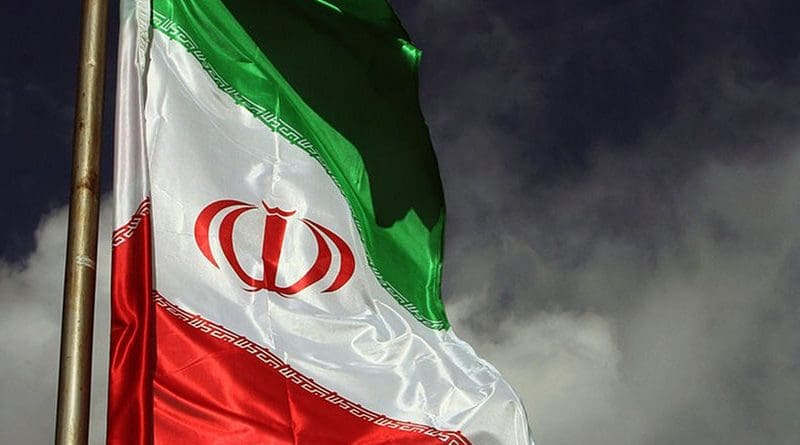Western Companies Circle As Iran Enters A Critical Month – Analysis
By Nadim Issa
The Joint Comprehensive Plan of Action (JCPOA) agreed on lifting Iran’s sanctions on a gradual basis, and subjecting the country to a 90-day monitoring period to see whether the Islamic Republic implements all the necessary conditions. Yet the agreement could be short-lived, as US President Barack Obama declared in mid-November the renewal of the national emergency with regards to Iran for another year, even though the United States just showed signs of good faith in easing some sanctions early. In early November 2015, the US Department of the Treasury’s Office of Foreign Assets Control (OFAC) said it was revising restrictions imposed in 2012 on exports of basic medical supplies to Iran.
International Players Eager to Enter the Iranian market
Global institutions and governments have welcomed the JCPOA with great interest as they begin to flock into Iran to ink new deals and sign memorandum of understandings. Their hope in setting foot on Iranian soil is to reap the benefits of tapping into this huge market of 78 million people who have not enjoyed the luxury of Western goods since 1979.
The IMF visited Iran in September to explore opportunities on how to modernize macroeconomic policies and help implement structural reforms. Moreover, the British Foreign Secretary also visited Iran in September to discuss ways on how to reform the banking system and develop the insurance and transportation sectors.
Russia also started its discussions with Iran to extend a multi-billion loan to develop the fields of construction, infrastructure, transport, and geological exploration.
Moreover, Iran signed in November three memorandums of understandings with South Africa to exchange information to fight money laundering, create joint markets, and also expand technical and economic cooperation.
Iran will also be the center of attraction this month as it hosts two important oil and gas summits, namely the Gas Exporting Countries Forum (GCEF) on November 23 and The Iran Petroleum Conference (IPC) on November 28-29, whereby leading government and corporate representatives from Africa and Europe will be there to tap into the potential investment opportunities of a post-sanctions Iran.
The Cyprus-based Capital Intelligence recently upgraded Iran’s long-term foreign and local currency ratings to ‘B+’ from ‘B,’ and affirmed its short-term foreign and local currency rating of ‘B.’ At the same time, the outlook for Iran’s ratings was revised to ‘stable’ from ‘positive.’
Iran’s Growth Potential
If the Western world implemented a full and lasting removal of sanctions in 2016, Iran could reap the benefits of exporting its main riches and lift its economy from the dire condition it currently finds itself in. Iran currently has a very limited circle of export partners with which it trades. The following countries constituted 82% of total non-oil exports in 2014: China 26%, Iraq 17%, UAE 11%, Afghanistan 7%, India 6%, Turkey 6%, Turkmenistan 3%, Egypt 2%, Hong Kong 2%, and Pakistan 2%.
Iran is rich in natural resources other than oil and gas, such as caviar, saffron, wheat, pistachio, iron ore, copper, gold and aluminium. It has embarked on a plan to lower its dependence on oil and gas by allocating a total of $29 billion to invest in the mining sector.
When we talk about the Iranian economy, the figures that come into mind are impressive since the country is a major player with over 78 million people and a GDP of over $415 billion – enough to rank it among the largest 30 economies in the world. That is why several international companies are eyeing this market, like the German agriculture firm BayWa AG, Chicago-based Archer-Daniels-Midland Company, the India-based steel firm State Trading Corporation, and the German-based Lufthansa Technik, Linde, Siemens, Mercedes, BASF, and Volkswagen Group to name a few.
Challenges Ahead
Several economists and analysts are predicting that there will not be a major change in the economic landscape in Iran in the coming few years, even if sanctions are fully lifted because the country, which has an unemployment rate of around 11%, lags on major administrative reforms, especially on the legislative and financial sides as highlighted in several visits by the IMF.
Ayatollah Khamenei emphasized in a recent letter to President Hassan Rouhani that the implementation of the JCPOA must lead to the promotion of a ‘resistance economy’ – a self-dependent economy which should not lead to the importation of American goods.
What is certain is that Iran is heading towards a more diversified economy where oil will not be the major revenue generating sector as it possesses several major goods that support its economy on their own. This is highlighted in its strive to decrease external debt, as the latter has shrunk year-on-year from $19.1 billion in the fiscal year 2011/2012 to $5.1 billion in 2014/2015. Moreover, its revenues surged from 544.4 trillion rials in 2011/2012 to 977.9 trillion rials in 2014/2015.
Iran has a critical month ahead to demonstrate to the Western world that its nuclear program is designed for peaceful purposes. If not, the International Atomic Energy Agency’s report, expected to be published in mid-December, will halt the dream of a full implementation of the JCPOA deal by year end.
This article was published by Geopolitical Monitor.com

